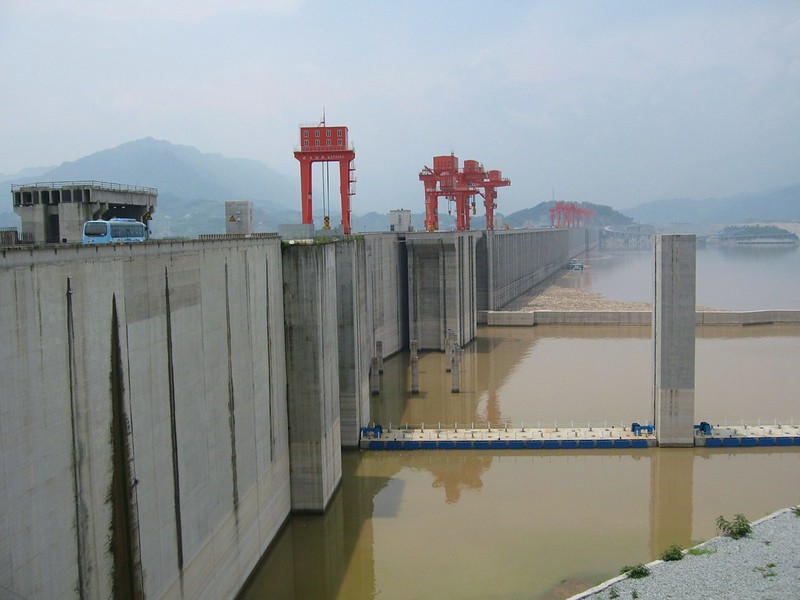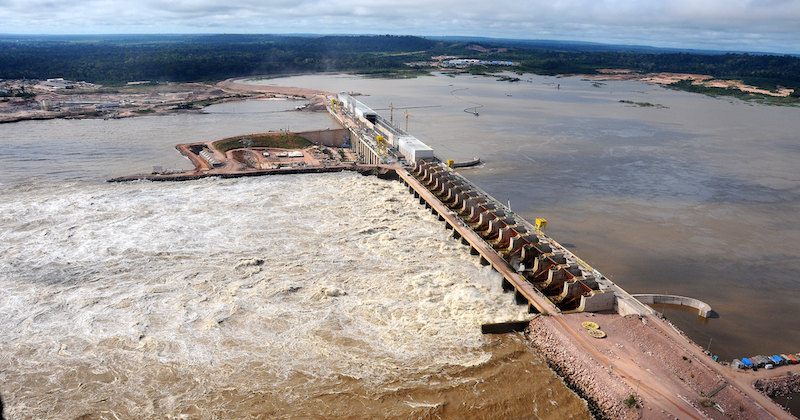Despite opposition, the bank has approved the first of five big dam projects expected to get its support in the coming months
This story was originally published by Yale Environment 360.
After a decade of declining to finance large hydroelectric dams, the World Bank is getting back into the business in a big way.
Throughout the last half of the 20th century, the bank was the world’s leading supporter of big hydro. But over the last two decades, it followed a zigzag pattern as dam supporters and critics inside the institution took turns determining hydro policy.
During the last 10 years, the critics — disturbed by big dams’ huge social and environmental costs and their long construction timelines — seemed to dominate, and the bank supported only one new big hydro project.
But last month the bank’s board of directors approved a scheme to make the bank the lead financier in a $6.3 billion project to finish construction of the Rogun Dam in Tajikistan. The frequently stalled project, launched in 1976, is now about 30 percent complete. If fully built, it would become both the world’s tallest dam, at 1,100 feet, and with its total price tag of $11 billion, one of the world’s most expensive.
The World Bank and Democratic Republic of Congo officials also have been negotiating the terms of a deal that would include financing Inga 3, the third of eight proposed dams in a megaproject known as Grand Inga.
Jaw-dropping in scale, Grand Inga is a $100-billion venture that would be the world’s largest dam scheme, nearly doubling the power output of China’s Three Gorges, currently the world’s largest hydroelectric dam, and potentially bringing electricity to a sizable chunk of the African continent. It would also reconfigure the hydrology of the world’s second-most-powerful river, the Congo, in what opponents consider environmentally harmful ways.

The Three Gorges dam on the Yangtze river in China (Photo: Pedro Vasquez/Flickr)
In addition, last April the bank “agreed in principle” to lead a consortium of international and regional banks financing a $1.1 billion dam, one of Nepal’s biggest, on the Arun River. Called the Upper Arun, the dam is backed by Indian companies, and its electricity is intended for export to India.
But Nepal is already sated with hydroelectricity, and as My Republica, a Kathmandu newspaper, reported in October, it has for several years been wasting massive amounts of produced electricity because of the inadequacy of its transmission lines.
The Upper Arun dam is also being built in a region that’s highly vulnerable to earthquakes and to floods caused by the bursting of ice dams on glacial lakes.
The bank’s role in these projects marks a sharp shift in its approach towards hydroelectric dams. “Rogun and Inga are the biggest dams in the world, on a scale we haven’t seen in decades,” said Josh Klemm, co-executive director of International Rivers, an Oakland, California-based river protection NGO. From 2014 to this year, the bank supported only one new major hydropower project, Nachtigal in Cameroon.
Yet before mid-2025, the bank’s board of directors is likely to approve financing for five major dams, including Rogun and Inga 3.
“We are witnessing a massive move [by the World Bank] to consider financing a range of large projects expected to have huge impacts on river basins, or that have already provoked huge, historic controversies,” said Eugene Simonov, coordinator of the Rivers Without Boundaries International Coalition and a researcher at the University of New South Wales, Canberra, in an interview. “The World Bank is revisiting projects it once dropped because of obvious challenges and risks, but those risks did not go away.”
In response to questions, World Bank officials said in a statement, “There has been no policy change on financing hydropower.” The statement continued, “Nevertheless, it has become increasingly clear that hydropower is an important component of promoting clean energy investments,” citing hydropower’s potential to supplement solar and wind energy.
The World Bank’s support for big hydro has been intermittent since the late 1990s, when social and environmental controversies sparked by its dam-building efforts spurred it to convene an investigative body — called the World Commission on Dams — of 12 independent experts to make recommendations for proper planning, design, and construction procedures for big dams. But the bank found the Commission’s recommendations, issued in 2000, so restrictive that it dismissed them.
Instead, it adopted a policy of “High Risk/High Reward” that wholeheartedly embraced big hydro. But the bank backed off when its dams once again triggered controversy. In 2013, the bank tried again to back big hydro, then backed off until 2018, when it softened its social and environmental standards for such projects.
“We believe the bank’s rediscovered fondness for big hydro reflects a desire by Ajay Banga, the bank’s president since June 2023, to kick off his tenure with a splash, even if that involves overlooking environmental and social issues that previously would have ruled the projects out,” said Klemm.
Yet bank officials seem to be playing down hydropower’s renewed prominence in their plans, experts say, noting that they may not want to draw attention to the high costs of building dams at a time when President-elect Donald Trump may be considering ending U.S. support for the bank.
Project 2025, the compendium of controversial nationalist policies devised by advisors close to Trump, says the new administration “should withdraw from both the World Bank and the International Monetary Fund and terminate its financial contribution to both institutions.” The U.S. is the bank’s largest contributor.
No matter how many of these projects result in completed dams, experts believe the bank’s involvement will not alter the global dam-building industry’s current downward trajectory, for many increasingly obvious reasons. These include dams’ enormous upfront costs followed by waits of as long as a decade or more before electricity revenues begin flowing; their destruction of fisheries and riverine ecosystems; their displacement of a conservatively estimated 80 million people around the world and their damage to the livelihoods of a half-billion more; their substantial emissions of methane from some reservoirs; their steep reductions in energy production when drought — which is increasingly common due to climate chang
Read More

